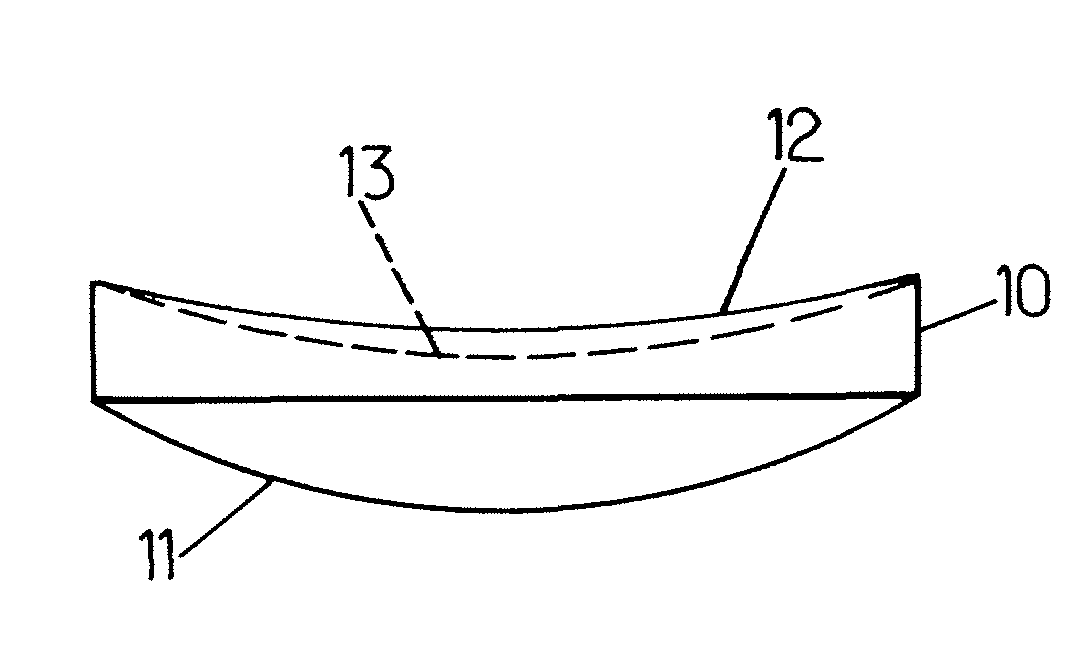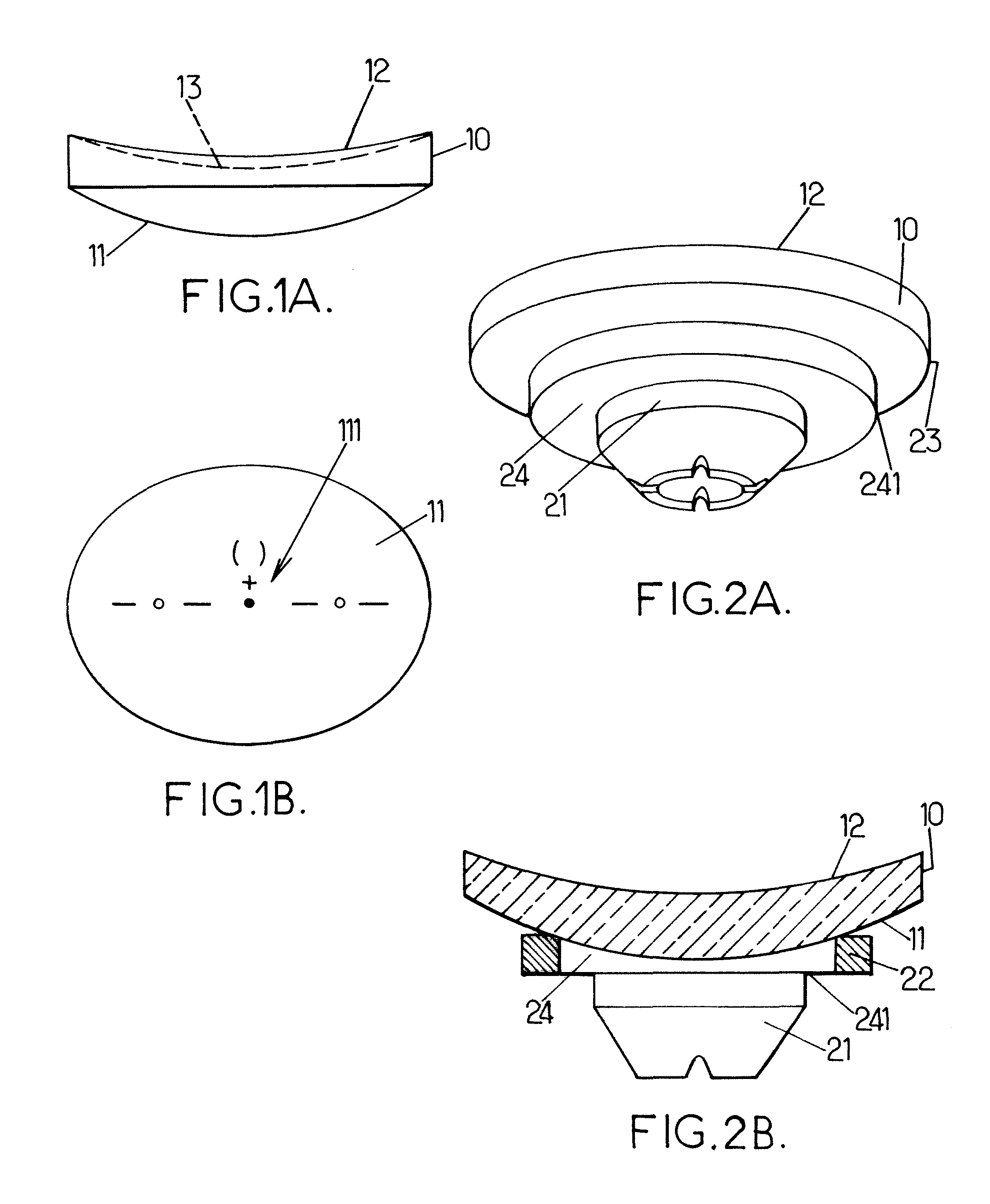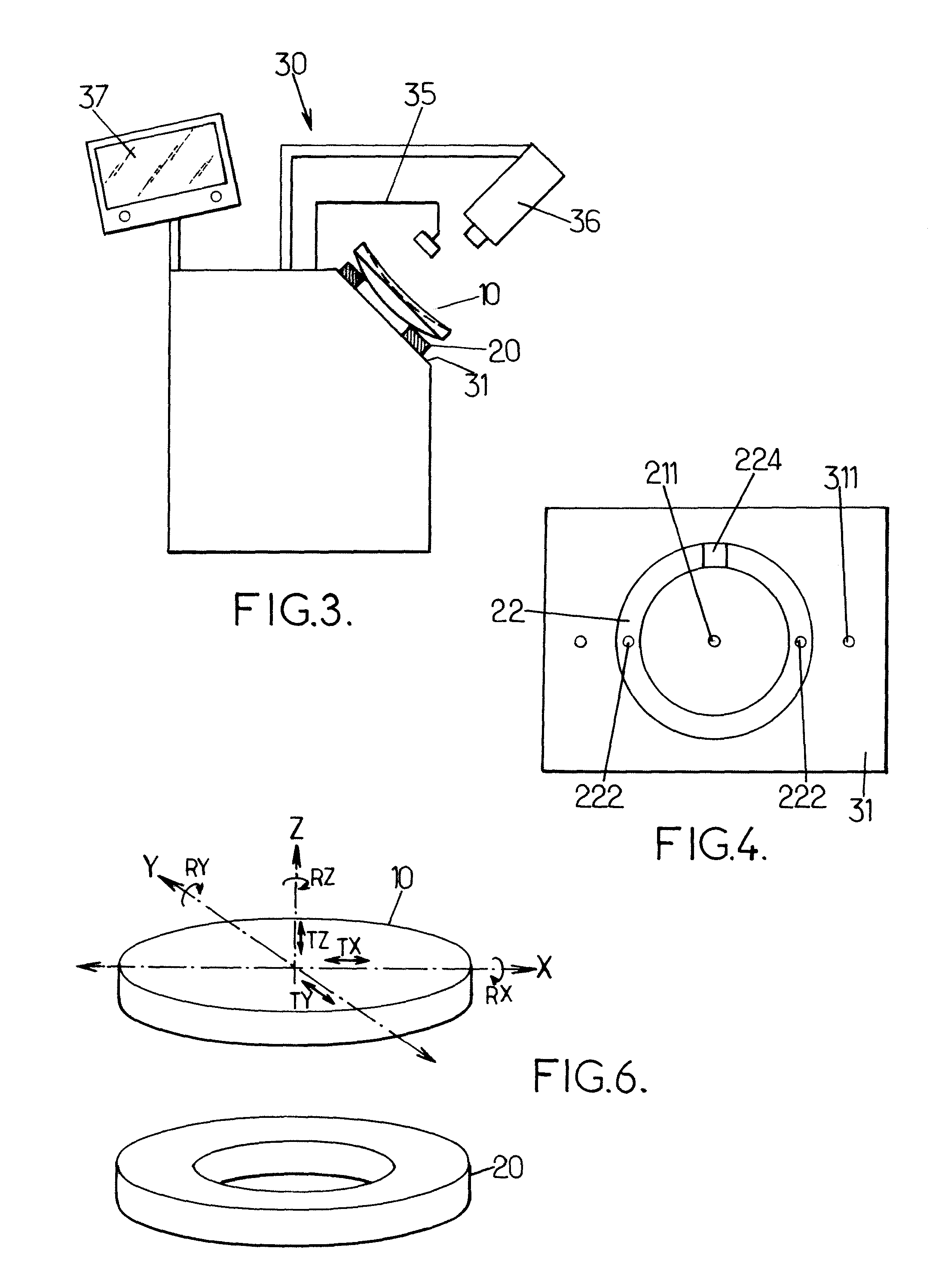Method and an Apparatus for Manufacturing an Optical Lens
a manufacturing method and optical lens technology, applied in the field of optical lens manufacturing, can solve problems such as incorrect positioning of one surface, and achieve the effect of respecting the optical properties of the desired lens
- Summary
- Abstract
- Description
- Claims
- Application Information
AI Technical Summary
Benefits of technology
Problems solved by technology
Method used
Image
Examples
first embodiment
[0042]a method and apparatus of manufacturing an optical lens from a semi finished lens will be described with reference to FIGS. 1A to 8B.
[0043]Semi finished lens member 10 has a preformed front surface 11 that, in use of the resulting finished optical lens, is disposed nearest the object being viewed and an opposing surface 12 to be modified by the manufacturing process to provide the back surface 13 of the finished optical lens, represented by the dotted line. Opposing surface 12 is machined by a machining tool so that the back surface 13 is orientated with respect to and distanced from the front surface 12, according to the required optical prescription. While in this embodiment of the invention, the back surface of the optical lens is formed by the machining process, it will be understood, that in alternative embodiments of the invention both or either surfaces of the lens may be formed by the machining process. Moreover, although the optical surface 13 to be manufactured is re...
second embodiment
[0070]the invention will now be described with reference to FIGS. 10 to 12.
[0071]In this embodiment of the invention lens member 10 which is similar to semi finished lens member 10 of the previous embodiment is mounted on a prismatic blocking device 40 as illustrated in FIG. 10.
[0072]Prismatic blocking device 40 enables the lens device to be supported at a given inclination or tilt for the machining process and comprises casting block 45 having a recessed housing 46 in which blocking preform 41 is housed, and a blocking ring 42. Preform 41 may be inclined at an angle a to the vertical axis. Blocking cast material 44 is poured into the cavity 47 defined by the front surface 11 of the optical lens 10, housing 46 and inclined preform 41. When cooled the blocking cast material 44 solidifies to support the optical lens 10 at the desired prismatic orientation for machining. The lower surface or bearing surface 441 of blocking material 441 acts as a reference surface. Blocking device 40 is...
case iii
[0084]The methods of the embodiments of the invention compensating for an positioning error rather than repositioning a lens member in order to reduce the error. There is no impact on the actual blocking operation since the compensation is performed by software, and thus no modifications to the physical blocking equipment are necessary for the methods to be implemented. The acceptable tolerances for positioning errors may be increased since the errors are compensated for. FIG. 13 illustrates what may happen when the machined surface is incorrectly positioned with respect to a preformed surface in the manufacture of an optical lens. In FIG. 13 the generation of the back surface 13 with respect to the front surface 11 is shown for[0085]case I where the lens member is placed at the correct positioning with respect to the blocker 21—in this case the back surface 13 is correctly orientated with respect to and distanced from the front surface 11 according to the optical prescription[0086]...
PUM
| Property | Measurement | Unit |
|---|---|---|
| optical properties | aaaaa | aaaaa |
| degrees of freedom | aaaaa | aaaaa |
| shape | aaaaa | aaaaa |
Abstract
Description
Claims
Application Information
 Login to View More
Login to View More - R&D
- Intellectual Property
- Life Sciences
- Materials
- Tech Scout
- Unparalleled Data Quality
- Higher Quality Content
- 60% Fewer Hallucinations
Browse by: Latest US Patents, China's latest patents, Technical Efficacy Thesaurus, Application Domain, Technology Topic, Popular Technical Reports.
© 2025 PatSnap. All rights reserved.Legal|Privacy policy|Modern Slavery Act Transparency Statement|Sitemap|About US| Contact US: help@patsnap.com



